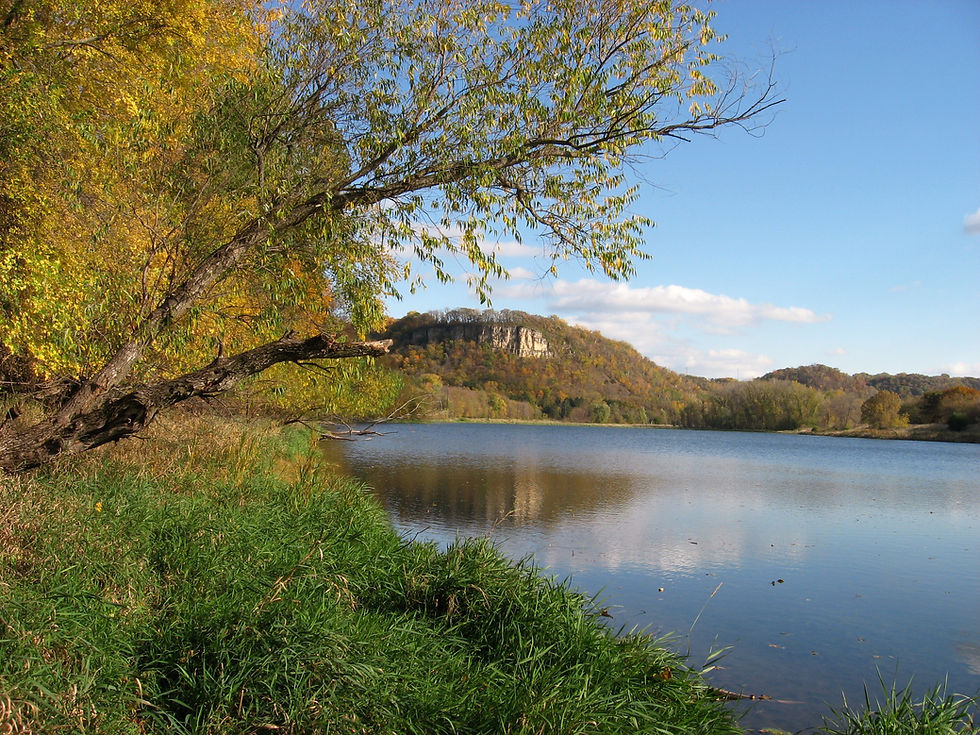Celestial Wonders
- Bruce Ause
- Dec 10, 2017
- 2 min read
Updated: Apr 21

Sunrise over Rattlesnake Bluff
At sunrise the earth is rotating towards the sun. As we approach the winter solstice, the northern hemisphere is tilted away from the sun creating conditions where the sun's rays have to travel a longer distance to reach us. Most colors, like green and violet get scattered before the light reaches the earth. Since red is scattered least, it is the color we see best creating beautiful sunrises and sunsets.

Full Cold Moon
On December 3rd, we experienced a super moon which is when the moon is at it's closest point to the earth in it's orbit. This is known as lunar perigee. Interestingly enough, even this late into the fall there are still a couple hundred herring and ring-billed gulls at the head of the lake.

Alpenglow on Wisconsin Bluffs
Late in the afternoon of December 7th, I hiked 45 minutes to arrive at the crest of Rattlesnake Bluff just before sunset. My arrival was in time to experience the optical phenomenon known as alpenglow. This is quite common in the mountains and appears as a horizontal reddish glow near the horizon opposite the setting sun.

Freeze-up on Wacouta Pond
Finally on December 7th, Wacouta Pond became ice covered. This compares with December 9 last year. It wasn't that many years ago that freeze-up was routinely before Thanksgiving. Chalk one up for climate change.

Winter Eagle Migration
On Monday December 4th following a stretch of warm weather, I observed only two bald eagles and a handful of diving ducks at the head of Lake Pepin. Then strong northwest winds arrived and temps dropped 30 to 40 degrees. Today December 10th, I observed 40 plus eagles and several goldeneyes and common mergansers in the same area. The winter eagle migration is definitely underway.

Late Arriving Diving Ducks
Common merganser and goldeneye numbers are increasing daily. If cold weather continues, they will number in the thousands on Lake Pepin. Check it out with a pair of binoculars anywhere you find open water.

Prairie on top of Rattlesnake Bluff
During the night of December 4th, we received our first measurable snowfall. One inch of snow on top of a half inch of ice. How long it stays white around here will be anybody's guess. Cross country skiing by Christmas is starting to look pretty bleak.

Highbush Cranberries
Now that the leaves have dropped and we have a thin layer of white, the bright red highbush cranberries are easily observed. In addition to making wonderful clear jelly, these cranberries are a good source of nourishment for cedar waxwings and other birds.

Blue Jay
The colorful blue jays are now frequenting our feeders. Jays have a gular pouch which assists them in carrying and eventually caching food for future use. I have personally observed a jay putting 25 sunflower seeds in it's beak before flying away. Researchers at the Cornell Lab of Ornithology have observed jays fitted with radio transmitters caching between 3,000 and 5,000 acorns each during the fall season.




Comments